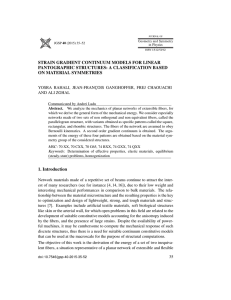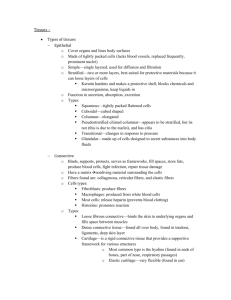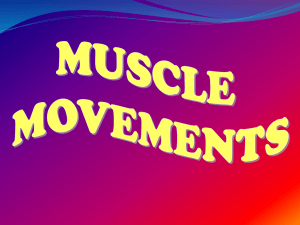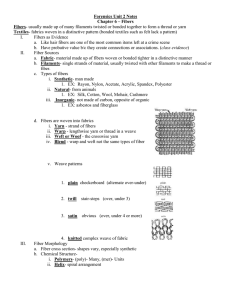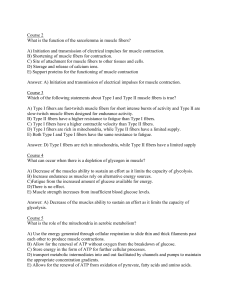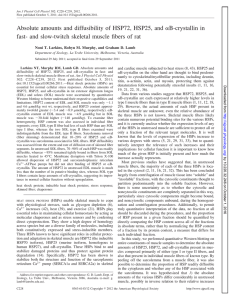Types of Movement
advertisement
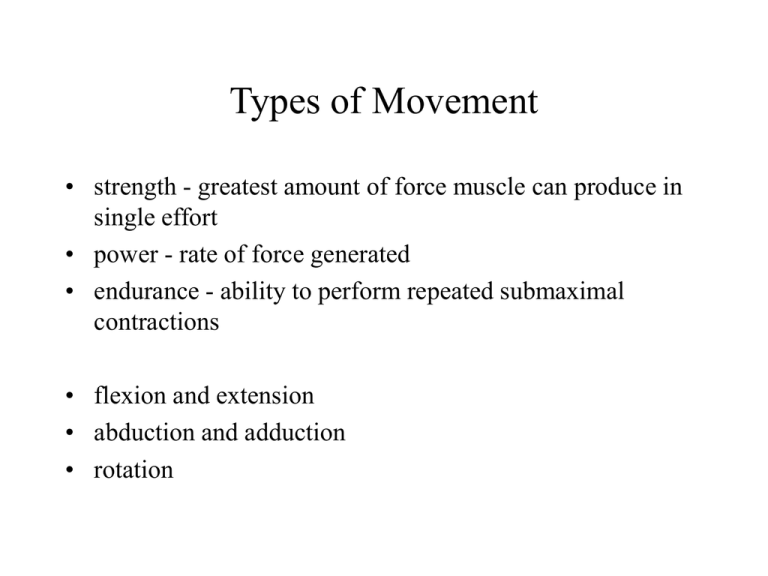
Types of Movement • strength - greatest amount of force muscle can produce in single effort • power - rate of force generated • endurance - ability to perform repeated submaximal contractions • flexion and extension • abduction and adduction • rotation Types of Contraction • isometric tension causes no change in length – fibers shorten internally • countered by antagonist – ex: cutting horse poised • concentric – muscle shortens as it generates tension – ex: flexor or extensor • eccentric – muscle lengthens as it generates tension – used to resist force – ex: flexor to control extensor and stabilize joint • muscles develop greatest tension with eccentric contraction – more soreness • downhill work • drop fences • collected frame Recruitment of Muscles • affected by gait, speed, and duration of exercise – change gait • use different muscles – change speed • recruit more fibers for increases force • controlled by nervous system – fibers vary in their sensitivity to impulse • walk – mostly ST fibers – only 10% of total fibers needed • trot – ST and FOG – trot about 30 - 50 % fibers recruited • canter – more FG fibers recruited • gallop (full out) – 100 % fibers recruited Effects of Conditioning • changes structure and chemical composition of fiber • twitch type does not change ( ST vs. FT ) • hypertrophy - muscle growth – increases size and weight • unfit - 42% of BW • fit 50 % BW – chemical effects • increase enzyme levels • increase amount of energy substrate stored • affects vary with intensity, duration, and frequency of regular exercise • endurance training – increase aerobic capacity • increase in aerobic enzyme activity – shift in preference of substrate use (fats) • increase number of oxidative fibers (FG to FOG) – rapid increase - first 2 months of training • increase volume density of mitochondria • increase capillary density – decrease speed and power • decrease fiber diameter – slow adaptation - several months – more efficient use of ATP with O2 • increase speed at which VLa4 occurs • sprint training (anaerobic) – increase power • increase diameter of glycolytic fibers – maximum force generated is proportional to cross sectional area – increase number actin and myosin myofibrils – increase amount of connective tissue – decrease aerobic capacity • decrease number capillaries for fiber area – improve buffering capacity in muscle fiber • delay decrease of pH

